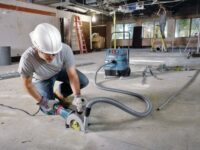If you’ve lived in a big city for any amount of time, then you’re likely familiar with construction. Construction projects in the city can take an astounding amount of time. This can be because of many factors like permits, safety measures, and unforeseen complications. Construction can also be slowed or halted by accidents, which are alarmingly common. On average, over 1,000 construction workers die of work-related causes each year in the United States. Typically, these causes result from an employer’s failure to protect the safety of their workers, often by ignoring regulations and cutting corners to save time and money. In the end, these choices can lead to construction accidents and unsafe conditions that cause physical harm to construction workers and can even cost them their lives.
Bursts, Blasts, and Blazes
Any time you’re working construction, especially when doing demolition or tunneling, you’re working with substances that have the potential to spark fires or even combust, bringing about misfortune. One such tragedy occured over a century ago, on January 20th, 1909, more than mile off the coast of Chicago during the construction of a water crib on Lake Michigan. In the middle of the night, a fire erupted in a temporary water crib that had 79 listed workers. The flames spread quickly throughout the wooden structure, incinerating the space along with anyone unlucky enough to be trapped inside. 48 men were rescued by a tugboat sent from a nearby crib, while 47 bodies were pulled from the fire and the freezing lake. The bodies of the men were laid to rest in a mass grave, since the majority of them were burned past the point of recognition. Many families of the workers blamed the construction companies for their deaths, since the workers were grotesquely underprepared for such an emergency. It was said that the workers had not received any formal training on what to do in the event of a fire, nor were there any life rafts or lifeboats for them to be able to escape on, and there were hardly enough life preservers for a quarter of the men on staff. In addition to this, during the investigation following the tragedy, it was revealed that the construction company had violated multiple regulations, like employing more men on the crib than capacity allowed as well as storing dangerous amounts of dynamite within the crib, that had–almost by a miracle–failed to detonate during the fire.
The Danger of Exposure
One of the most common causes of death in construction workers is exposure to harmful substances. The sad truth behind this cause-of-death is that a lot of times, employers aren’t made aware of the negative effects that exposure to certain substances can have until it’s too late and the damage has already been done. This happened in West Virginia in the 1920s, when construction began on the Hawk’s Nest Tunnel to generate power for a local plant. During construction, the workers came across silica–a mineral used for creating glass products–and were asked by their employers to mine it. Unfortunately, very few of the workers received the proper breathing equipment to allow them to safely do so, and as a result, the majority of them ended up inhaling large amounts of silica dust. Within just a few years of the mining, many of these construction workers became severely ill and were diagnosed with silicosis–a deadly form of pulmonary fibrosis caused by breathing in tiny silica particles that damage and scar lung tissue, making it more difficult for lungs to function properly. It’s estimated that anywhere between 500 and 1,000 workers died as a result of their exposure to the deadly silica particles. Many families of the construction workers who died as a result of improper safety precautions were compensated for their loss. While this compensation helped to cover medical bills and associated expenses, it could not reverse the damage that was done.
Exposure can go beyond hazardous substances. For example, construction during the winter season provides the opportunity for workers to suffer from exposure to the elements. Construction companies are required to provide their workers with adequate heat and shelter from the elements during projects. However, this does not always happen. When companies fail to do this, it puts workers at risk for complications like chilblains, frostbite, gangrene , or hypothermia. When worksites are exposed to winter weather, they can also become more treacherous for workers. Iced-over scaffolding provides a much greater risk for slip and fall accidents, and if these accidents occur at taller heights, they could prove to be fatal.




















